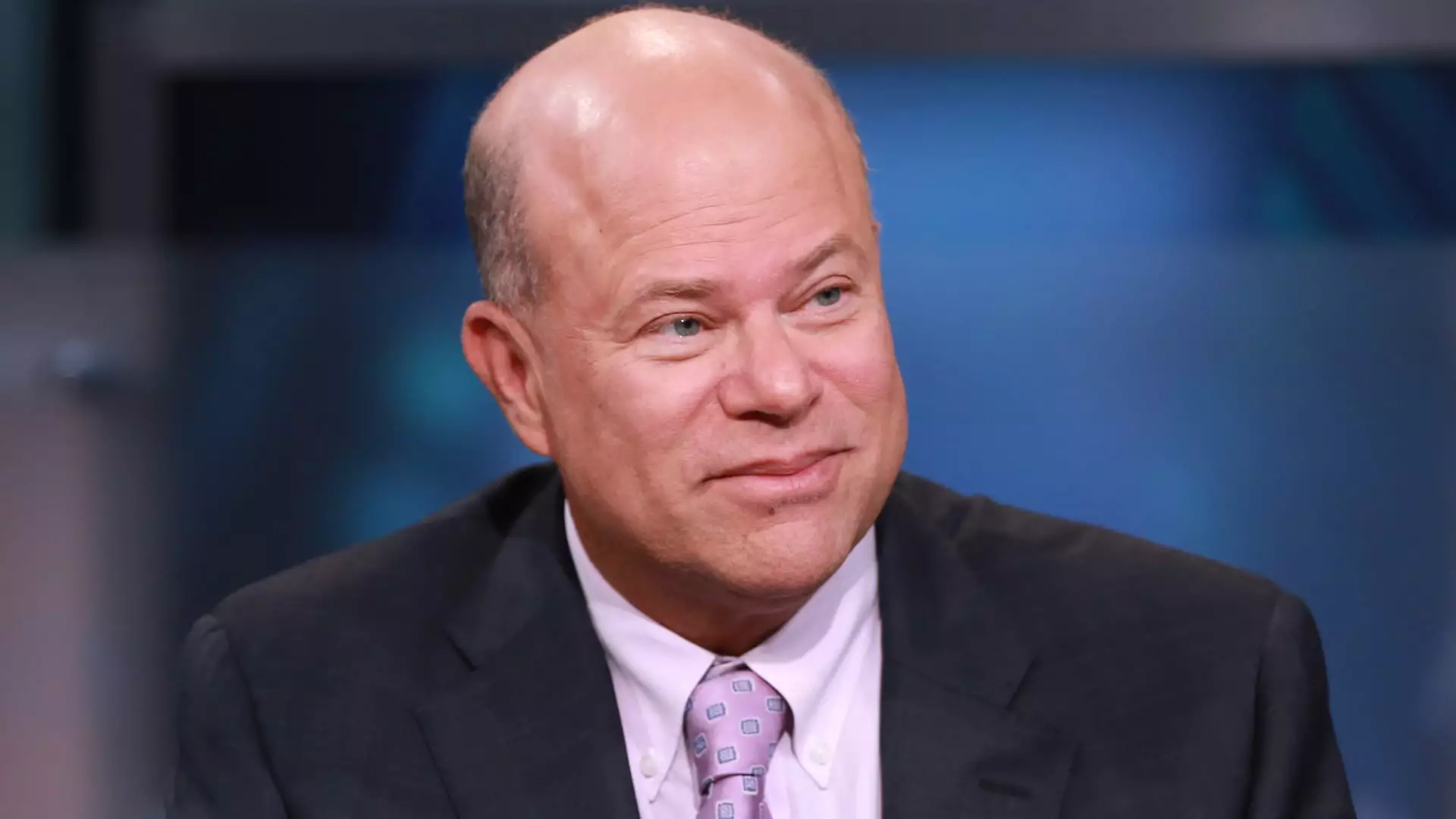The financial landscape is notably influenced by the decisions made by central banks, particularly the Federal Reserve (Fed) in the United States. Recent comments by prominent investors such as David Tepper, founder of Appaloosa Management, highlight an intriguing dichotomy: while the Fed is making aggressive moves to lower interest rates, the broader implications on economic stability and investor confidence remain ambiguous. Tepper’s insights shine a light on the delicate balance between monetary policy and market reactions, prompting a deeper analysis of the potential risks and rewards that lie ahead.
Tepper’s remarks on CNBC reflect a sentiment shared by many market participants: belief in the Fed’s ability to follow through on its stated intentions is crucial. Tepper emphasized the importance of the Fed’s credibility, especially after the central bank enacted a significant interest rate cut—its first in four years—despite a seemingly stable economy. The Fed’s reduction of half a percentage point off its benchmark rates marks a significant tactical shift, particularly as it faces the challenge of maintaining its authoritative position in guiding the economy.
The Fed’s recent communication conveyed a commitment to further adjust rates, as indicated by its “dot plot,” which suggested the potential for additional 50 basis points of cuts by the year’s end. However, such moves raise questions about the Fed’s motives: is it truly responding to economic needs, or is it attempting to mitigate potential market volatility? Tepper’s perspective underscores that while the Fed may act with conviction, the macroeconomic indicators do not always support aggressive easing, especially in a time when GDP growth remains reasonably robust.
An important aspect of Tepper’s analysis involves historical precedents, particularly the actions of the Fed during the 1990s leading up to the Y2K incident. He draws parallels to the current situation, where substantial rate cuts were deployed despite solid economic indicators. The aftermath of those decisions was marked by asset bubbles, leading to significant market corrections. With this historical context, Tepper expresses a sense of caution regarding current market dynamics and the possibility of repeating past mistakes.
The Fed has a dual mandate—promoting maximum employment and stable prices—and in light of mixed labor market signals alongside a resilient consumer spending landscape, Tepper raises a crucial point about the delicate interplay between monetary policy and economic indicators. While inflation remains above the Fed’s target, signs of labor market slowdown compel the central bank to exercise caution in its enhancements to economic policy.
Investing in a Shifting Landscape
Despite his reservations regarding the U.S. stock market’s valuation, Tepper remains hesitant to take a short position. His inclination to maintain a long position indicates a recognition of the immediate gains that can be derived from an easy monetary policy. Tepper’s comments articulate a tension that many investors face—balancing the current supportive conditions with the underlying risks posed by potential economic overheating or corrective downturns.
Moreover, Tepper’s bullish pivot towards Asian equities highlights a growing trend where investors are recalibrating their strategies in response to global market shifts, particularly after the Fed’s actions. He posits that the rate cut and accompanying government support measures in China make it an attractive investment landscape compared to U.S. stocks. Such strategic decisions underscore a broader shift in investor focus toward markets outside of the U.S., reflecting concerns over domestic economic sustainability.
David Tepper’s analysis serves as a critical reminder of the intricate relationship between central bank policies, investor sentiment, and economic realities. While the Fed attempts to bolster economic growth through aggressive rate cuts, the historical context suggests caution is warranted. Investors face a complicated environment where opportunities and risks coexist, compelling them to remain vigilant and adaptive to changing circumstances. Ultimately, as Tepper illustrates, understanding the nuances of economic policy and its potential fallout is essential for navigating the future of investment in an increasingly volatile market.

